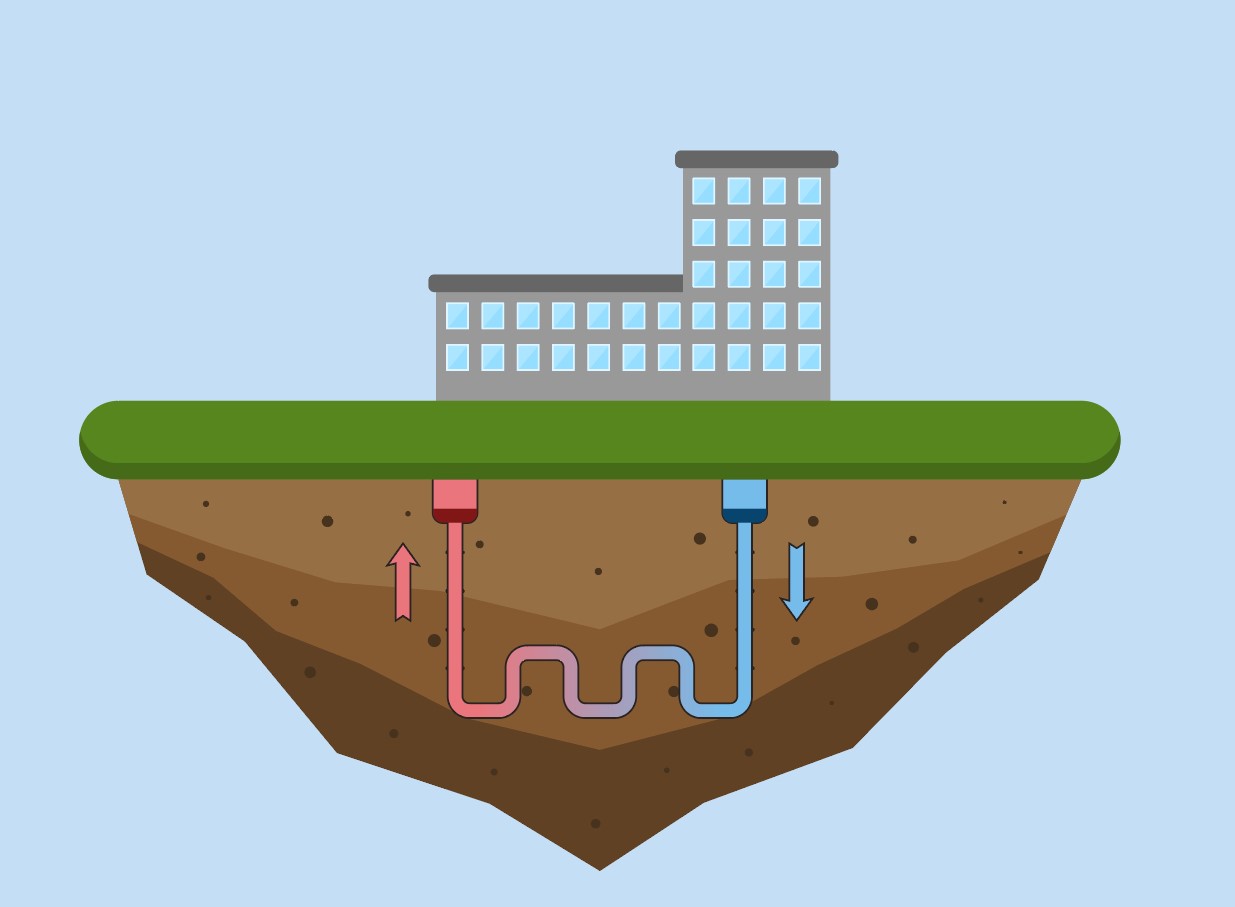Could your existing or upcoming facility benefit from a heating and cooling system offering lower energy costs, reduced maintenance, and excellent controllability? A geothermal heat pump system may be the answer.
As we all know, heat flows from warm materials to cooler ones. To keep ourselves comfortable, we heat and cool our buildings in order to maintain more constant temperatures than outside, using a tremendous amount of energy—and causing a great deal of pollution—in the process. Heat pumps, especially geothermal heat pumps (GHPs), have emerged as an efficient technology to provide thermal comfort while reducing energy consumption and pollution compared to other systems.
A geothermal (or ground-source) heat pump works by circulating fluid through pipes buried underground, where temperatures remain a fairly constant 50 to 55 degrees year-around. When cooling is required, the system warms the circulating fluid with heat removed from the building, dispersing the heat into the soil.
When heating is required, the opposite cycle occurs: The circulating fluid is cooled by removing heat from it and giving it to the building, then re-warmed as it circulates through the underground pipes.
In a large building such as a hospital, some rooms (with sunny south-facing windows, for example) may need cooling at the same time that others need
heating. A heat pump system can handle this situation with ease, as heat expelled into the fluid by a room being cooled can be transferred from the fluid back into a room requiring heat. This flexibility means that every space can be maintained at its desired temperature, independent of the rest of the building. This feat would otherwise require an expensive 3- or 4-pipe HVAC system.
While GHPs cost more to construct than most conventional air-conditioning and gas-fired furnace systems, they consume 25%–50% less energy, paying back their extra cost within just a few years. Because GHPs themselves do not consume fossil fuels, they do not directly contribute greenhouse gasses to the atmosphere. In fact, if some of the savings from reduced energy usage were used to purchase electricity from wind or solar sources, heating and cooling of the building could be carbon-neutral!
Great River Medical Center’s Greenfield Replacement Hospital in Burlington, Iowa, built in 2000, uses a lake-coupled geothermal system to save nearly $1 million per year in fuel costs. A replacement hospital for Sherman Health, outside of Chicago, is currently under construction and will also feature a 15-acre lake-coupled system. One benefit of this system is that the pipe loops can be filled with air and will float to the lake surface for easy maintenance. Homelake Veterans’ Center in southern Colorado is currently installing a horizontal closed-loop system, which will serve 23 existing residential duplex cottages built between 1914 and 1939.
While a GHP system can be constructed nearly anywhere, understand that local geology, hydrology and land availability will influence the type of system best suited for a particular site and its effectiveness.
Geothermal heat pump technology is well-developed, widely-available, and applicable to many new construction projects and as a retrofit to many existing facilities. If your medical center is looking to save money and reduce environmental impacts, GHP is worth considering.
